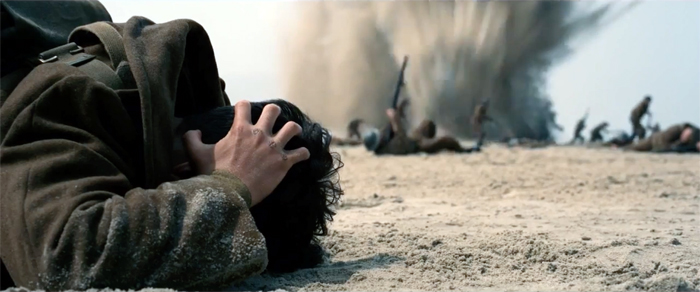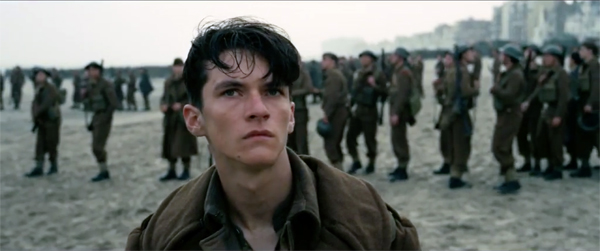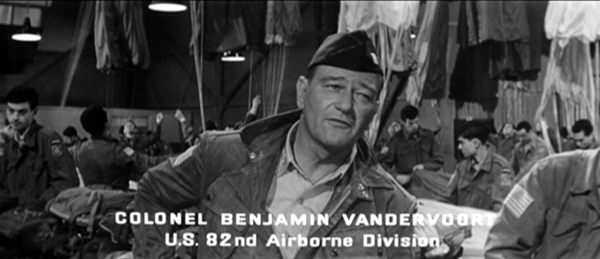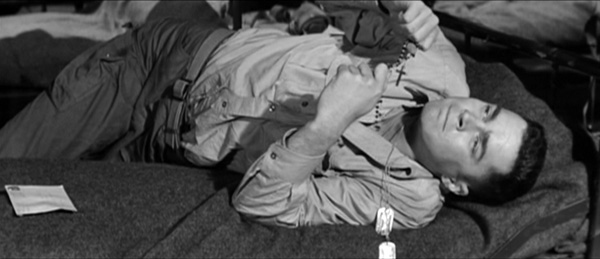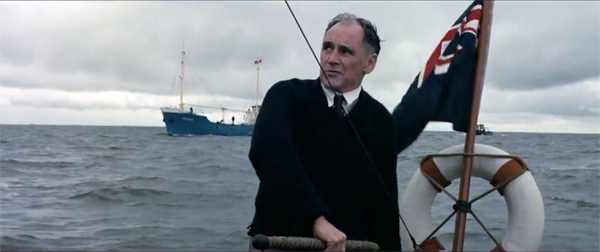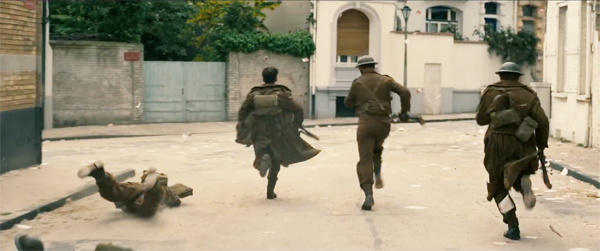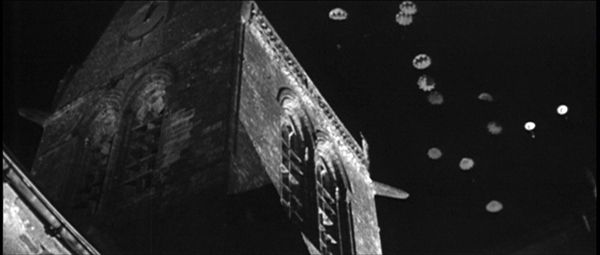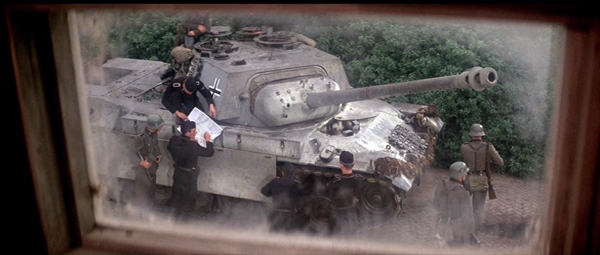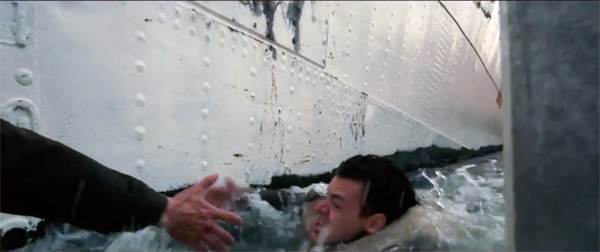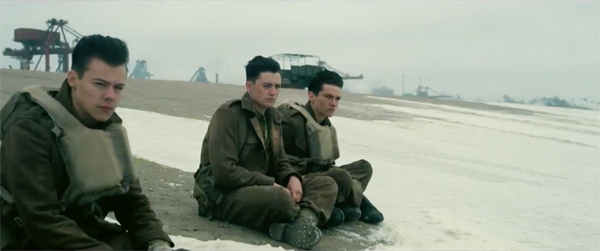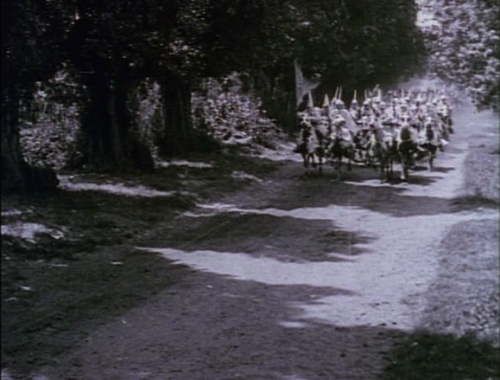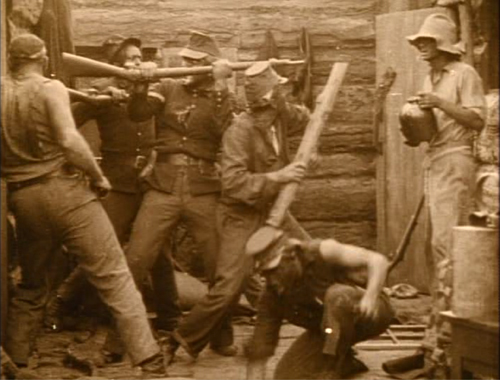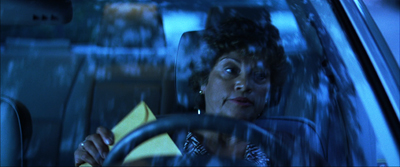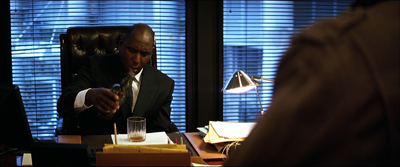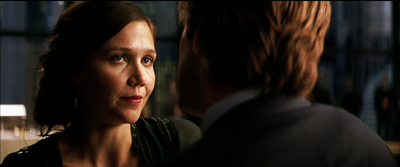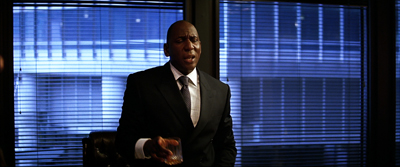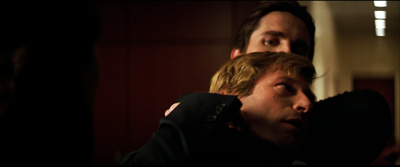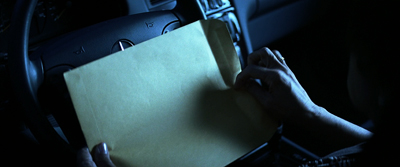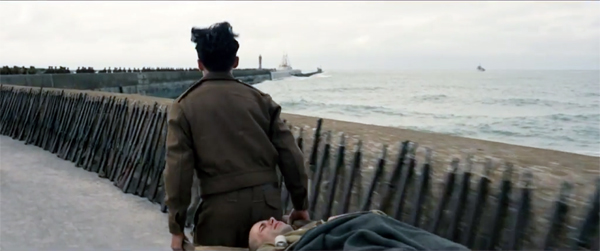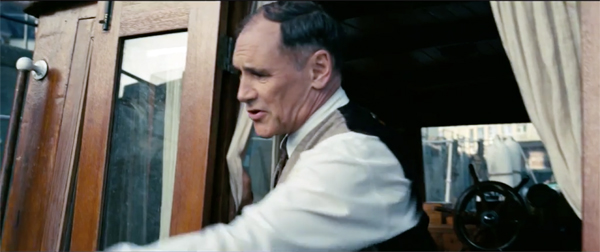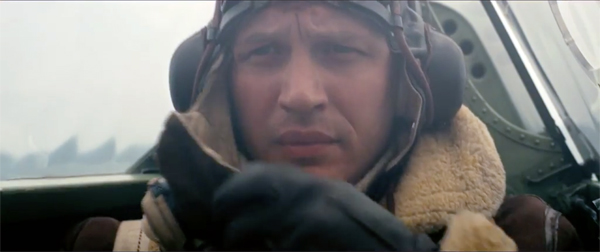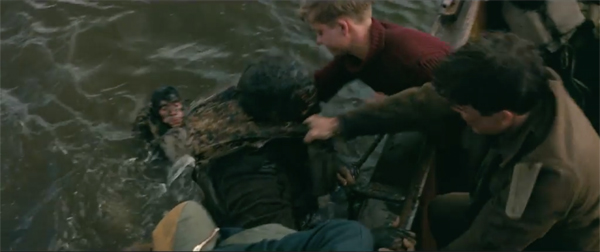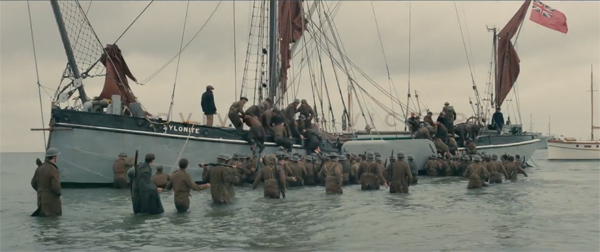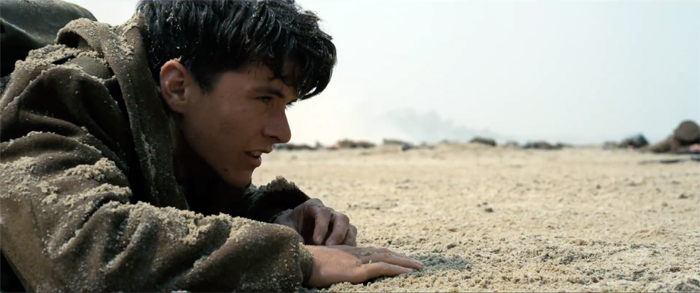DUNKIRK Part 2: The art film as event movie
Wednesday | August 9, 2017 open printable version
open printable version
Dunkirk (2017).
DB here:
In some ways Christopher Nolan has become our Stanley Kubrick. Many directors have found ways to turn genre movies into art films; think of Wes Anderson and comedy, or Paul Thomas Anderson and melodrama. But seldom does the result become both a prestige picture and an event film.
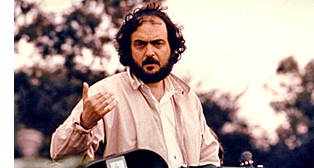 Kubrick managed it. After showing his commercial acumen with Spartacus, Lolita, and Dr. Strangelove (costume picture, controversial adaptation, satire) he was able to make 2001, a meditation on life and the cosmos in the trappings of science fiction. From then on, he could frame any project as both working in a familiar genre and offering a challenging narrative or theme. Thanks to shrewd marketing of both each project and his image, he invested his adaptations (A Clockwork Orange, Barry Lyndon, The Shining, Full Metal Jacket, Eyes Wide Shut) with a must-see aura. Whether or not the film was a top grosser, people said, this is a guy a studio wants to be in business with. Warners obliged.
Kubrick managed it. After showing his commercial acumen with Spartacus, Lolita, and Dr. Strangelove (costume picture, controversial adaptation, satire) he was able to make 2001, a meditation on life and the cosmos in the trappings of science fiction. From then on, he could frame any project as both working in a familiar genre and offering a challenging narrative or theme. Thanks to shrewd marketing of both each project and his image, he invested his adaptations (A Clockwork Orange, Barry Lyndon, The Shining, Full Metal Jacket, Eyes Wide Shut) with a must-see aura. Whether or not the film was a top grosser, people said, this is a guy a studio wants to be in business with. Warners obliged.
Like Kubrick, Nolan moved from the independent realm to an assignment (Insomnia) before being entrusted with a big picture, the first of the Batman reboots. As he developed the Dark Knight trilogy, he made two films in the one-for-them, one-for-me mode (The Prestige, Inception). But Inception became his 2001, a genre hybrid (science-fiction/heist film) that proved that he could turn an eccentric “personal” project into a blockbuster. After The Dark Knight Rises, Interstellar showed that he could make an original genre film that was both prestigious (brainy, based on real science) and an event film. He became another director you want to be in business with. Warners obliged.
 There are other affinities, surely. Both Kubrick and Nolan are often considered cerebral technicians, setting themselves gearhead problems with each project. They’re called cold as well. In Kubrick’s case, his detachment is best understood, as Jim Naremore has convincingly argued, as a commitment to the grotesque. Nolan, on the other hand, takes strong emotional situations as his premise but subordinates them to labyrinthine formal designs. For example, the conventional device of the dead wife justifies intricate plot structures in both Memento and Inception. Sensitive to the charge of coldness, in promoting every film Nolan emphasizes how his formal strategies aim to enhance emotion. But Kristin and I think that they’re of intrinsic interest, as she argues in relation to exposition in Inception.
There are other affinities, surely. Both Kubrick and Nolan are often considered cerebral technicians, setting themselves gearhead problems with each project. They’re called cold as well. In Kubrick’s case, his detachment is best understood, as Jim Naremore has convincingly argued, as a commitment to the grotesque. Nolan, on the other hand, takes strong emotional situations as his premise but subordinates them to labyrinthine formal designs. For example, the conventional device of the dead wife justifies intricate plot structures in both Memento and Inception. Sensitive to the charge of coldness, in promoting every film Nolan emphasizes how his formal strategies aim to enhance emotion. But Kristin and I think that they’re of intrinsic interest, as she argues in relation to exposition in Inception.
True, Kubrick the former photographer is the more fastidious stylist. You can’t imagine him accepting that his film could be shown in three aspect ratios (as Dunkirk is). The Prestige shows that Nolan can be a precise pictorialist, but as I argue in our little book on his work he’s usually looser at the level of composition and cutting. What he’s interested in above all is narrative.
It’s rare to find any mainstream director so relentlessly focused on exploring a particular batch of storytelling techniques. Like Resnais, Godard, and Hong Sangsoo (a strange crew, I admit), Nolan zeroes in, from film to film, on a few narrative devices, finding new possibilities in what most directors handle routinely. He seems to me a very thoughtful, almost theoretical director in his fascination with turning certain conventions this way and that, to reveal their unexpected possibilities.
Specifically, I think, he’s interested in subjective storytelling, and how it interacts with a very traditional film technique: crosscutting. And he manages to make both fit within a genre framework.
Take Dunkirk. Spoilers ahead.
Field-stripping the war movie
In working on Reinventing Hollywood, I came to realize that the war film bristles with a lot of narrative possibilities. You can focus on a single protagonist, as Sergeant York and Hacksaw Ridge do. Or you can spread the protagonist function to two pals, three comrades, or an entire unit. Mission-team movies like Desperate Journey or The Guns of Navarone can be tightly plotted, but films about ongoing combat can be more episodic, stressing the long slog (The Story of G.I. Joe) or the need to respond to more or less random attacks (Battleground). In most variants, battles and strategy sessions alternate with relatively dead time when the grunts ponder their fate and talk about life back home. Letters from mom or photos of wives and girlfriends are a must.
One popular subgenre is the Big Maneuver movie. In The Longest Day the Allies’ landing at Normandy is given as a panorama across nations and a trip through the military hierarchy. The viewpoint sweeps from top brass on both the Allies’ and Axis side to lower-down infantrymen, partisans, and ordinary citizens. Although A Bridge Too Far stresses the generals’ debates about what turns out to be a failed strategy, it too spends time on lower-echelon officers.
In the Big Maneuver movie, certain scenes are conventional. We see briefing rooms fitted out with maps and models of the terrain. Because the cast is vast, officers are sometimes distinguished by titles (as well as being played by instantly recognizable stars).
And when the film’s narration shifts to the grunts, we get quick characterizations that invoke their pasts. Early in The Longest Day, a rosary in an envelope reminds paratrooper Schultz of an incident at Fort Bragg.
Later in the film we’ll find out what this incident was, and what it says about his character.
As many critics have noticed, Dunkirk adopts the framework of the Big Maneuver war movie but it strips away many of these conventions. The only map we can examine, as Kristin mentioned, is the one on the leaflets the Germans are circulating, and for our protagonist the leaflets’ biggest value is as toilet paper. Commander Bolton and Colonel Winnaut are the only brass we see, apart from a brief visit from a Rear Admiral. More important, they’re in the thick of it, not in some safe HQ reading dispatches and pushing toy ships around tabletops.
Just as important, Nolan has purged the characters of backstory. Tommy, Farrier, pilot Collins, the French boy posing as Gibson, and Alex, the angry soldier who attaches himself to Tommy, aren’t given family or memories, nor do they display tokens of home. We don’t even know how Tommy got those scars on his knuckles. Only Mr. Dawson has a bit of a past, and that’s given us late when we learn that his son, an RAF pilot, was killed–thus giving extra motivation to his patriotic urge to help in the evacuation.
While critics complained of too much exposition in Inception, now Nolan gives almost none. In one sense, this laconic presentation is characteristic of the blank spaces we find in “art films,” where character motivation and psychology are often obscure. This is, by Hollywood standards, certainly a sparse war picture. Yet Nolan has spoken of this strategy as reworking a familiar structure. His film, he says, is all climax.
For me, this film was always going to play like the third act of a bigger film. There have been films that have done this in recent years, like George Miller’s last Mad Max film, Fury Road, or Alfonso Cuarón’s Gravity, where you’re dealing with things as the characters deal with them.
Kristin’s previous entry points out that in her model of classical plot structure, the film is actually both a Development and a Climax–that is, parts three and four. A Development section consists of obstacles and delays, which comprise most of the action of this film before the climactic bomber attack. Still, Nolan’s point is well-taken. In most climax sections (third acts), we know everything we need to know about the action. All the relevant motivations and backstory have been supplied in the earlier stretches, so we can concentrate solely on what happens next. In Dunkirk, we don’t see those prior sections, so we’re plunged into the prolonged suspense characteristic of climaxes.
The war movie as thriller
Granted, suspense is an ingredient of any war picture. Alongside GHQ debates about strategy, the Big Maneuver movie includes episodes aiming at momentary tension. The dive into the French village in The Longest Day offers the painful spectacle of men being shot down like a flock of geese, while A Bridge Too Far shows Urquhart (Sean Connery) trapped in a Dutch household as Nazis surround him.
Nolan’s strategy, though, is to make virtually the entire film an exercise in suspense. He understands that pure suspense doesn’t require us to like or even know a lot about the characters. We can feel tension in relation to characters we don’t like (e.g., Bruno’s reaching for the lighter in Strangers on a Train) or characters we don’t know much about at all.
Dunkirk offers a cascade of primal dangers, an anthology of narrow escapes and last-minute rescues.
The whole film is a race against time, enclosing mini-races. Nolan plays on fears of being crushed, swallowed by darkness, blasted to bits, and shot out of the sky. How many ways can you drown–in a sinking ship, under a flaming oil slick, inside a Spitfire cockpit? The appeals are elemental and irresistible; a child of five could understand the dangers here. This catalogue of stark situations takes us straight back to silent cinema, to cliffhangers, Griffith rescues, and Lang’s dungeons filling with water. Nolan points out:
Dunkirk is all about physical process, all about tension in the moment, not backstories. It’s all about ‘Can this guy get across a plank over this hole?’
Those who want films to focus only on higher things, big ideas or subtle emotions, miss the visceral dimension of cinema. It’s led critics to avoid analyzing musicals, cop thrillers, Asian martial arts films, and Eisenstein’s action sequences. (Ritual invocations of The Body notwithstanding.) The Battleship Potemkin, Police Story, The Raid: Redemption, and much other excellent cinema happily passes The Plank Test.
Does this make the film superficial? Nolan explains that even in the absence of characterization, suspense triggers involuntary, universal responses. Consider Tommy trying to run across the plank.
We care about him. We don’t want him to fall down. We care about these people because we’re human beings and we have that basic empathy.
In creating the suspense, Nolan went, as he puts it, “in a more Hitchcock direction.” That entails, for reasons we’ve talked about here and here, playing between restricted and more unrestricted point of view. Not only do we not see the GHQ strategizing, we aren’t taken into the enemy camp. From the start, when gunfire drives Tommy down the Dunkirk streets, the attacks come from offscreen. Only at the very end will a couple of blurry Nazi-shaped figures appear behind the captured pilot Farrier.
In the end, the key for me was reading a lot of firsthand accounts of the people who were there. It became apparent to me that the subjective approach — really putting the audience on the beach with the characters, putting them in the cockpit of the plane, putting them on one of the boats coming across to help — that was going to be the way to tell the story and get across this much bigger picture.
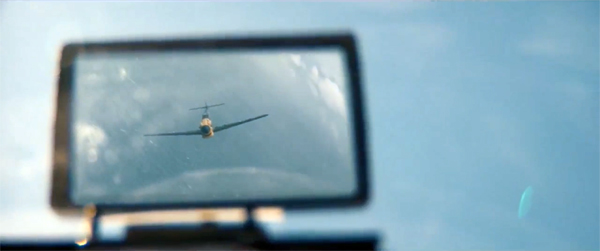
To drive home what it feels like to just barely get by, Nolan ties us tightly to Tommy the foot soldier, Mr. Dawson and his son Peter on their boat, and Farrier the Spitfire pilot, with side visits to Commander Bolton on the Mole. Sometimes he supplies optical POV shots, but more generally he simply confines us to what happens in these men’s ken. The result is both surprise–when the bullets or bombers appear–and suspense, when we cut between Tommy and other soldiers swamped below deck while Gibson struggles to open the hatch and free them.
Even the clicking shut of a cabin latch–or not clicking it shut–generates tension, heightened by the ticking of Zimmer’s score. (At times I thought the pulse in my skull was synched up with the metronomic soundtrack.) The emblem of Nolan’s narrational strategy might be the pitiless shot surmounting today’s entry, showing Tommy flattened while bombs drop one by one behind him, coming inexorably closer to the foreground. Nolan turned superhero films, science-fiction films, and fantasy films into ticking-clock thrillers, and now he does it with a war movie.
The limiting of viewpoint links to some of Nolan’s perennial concern with subjectivity, I think, but it’s also there as a strain within the tradition of war fiction and film. Remarque’s novel All Quiet on the Western Front is like a diary, told in first-person present tense but with flashbacks in the past tense. Catch-22 is in long stretches tied to Yossarian’s jumbled memories of flight missions and hospital stays. Terrence Malick’s adaptation of The Thin Red Line, a film Nolan much admires, turns James Jones’ third-person novel into a lyrical fantasia on war as both a violation of nature and an extension of it, with flashbacks and brooding soliloquys. But in Dunkirk Nolan avoids the deeper registers of subjectivity he’s explored before–no memories, no dreams or fantasies, just brute happenings and the stubborn physical demands of earth and rock and water.
The viewpoint range isn’t as narrow as I’ve suggested, though. Nolan broadens his scope by cutting back and forth among the subjective stretches. Again, this is standard operating procedure in the Big Maneuver film. But that crosscutting was never like this.
Time out from battle
Dunkirk, sans credits, runs a little more than 99 minutes and consists of around 99 sequences. It’s very fragmentary. But then, so is a lot of war fiction. All Quiet consists of many fairly short scenes. Evelyn Scott’s vast novel The Wave (1929) surveys the US Civil War through over a hundred vignettes of the home front and the battlefront, involving characters mostly unaware of each other. William March’s Company K (1933) consists of 113 short segments, each bearing the name of one soldier and told in first-person by him (even if he dies in the course of the episode). Unlike what happens in The Wave, the men are mostly known to one another, and some actions are replayed through different viewpoints. A fancier sort of fragmentation goes on in Mailer’s The Naked and the Dead (1948), which interrupts its scenes with flashbacks (“The Time Machine”) and sections called “Chorus.”
T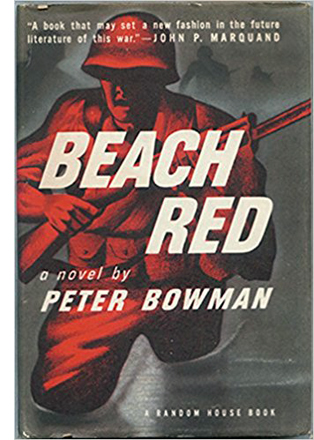 he war novel I’ve seen that’s closest to what Nolan gives us is Peter Bowman’s Beach Red (1946). The story tells of a US effort to capture a Japanese-held island. Bowman wanted, he explained to achieve “a sincere representation of a composite American soldier living from second to second and minute to minute because that is all he can be sure of.” This heightened sensitivity to duration led Bowman to try an unusual strategy.
he war novel I’ve seen that’s closest to what Nolan gives us is Peter Bowman’s Beach Red (1946). The story tells of a US effort to capture a Japanese-held island. Bowman wanted, he explained to achieve “a sincere representation of a composite American soldier living from second to second and minute to minute because that is all he can be sure of.” This heightened sensitivity to duration led Bowman to try an unusual strategy.
His novel is in blank verse, in stanzas of varying length but all conforming to a strict pattern. Each line is equal to one second of story time. Each chapter consists of sixty lines, or one minute of story time. And the book has sixty chapters, representing the hour in which the forces take the beachhead. Like Nolan, Bowman wants a deep, visceral subjectivity, and he aims at this through a frankly mechanical layout of his text. The rigid pattern seeks to force the reader to sink into time. Bowman explains:
I have tried to create a mood of inexorable regularity that would correspond to the subtle tyranny of the military timetable. . . . I have attempted to do for the eye what the ticking of a clock accomplishes for the ear. . . the relentless inflexibility of time itself.
The aching inching forward of time is stressed thematically too, which includes reflections like “Would there be armies if clocks had never been invented?” The book ends with the second-person narration (“You”) dying. Soldier Whitney reports: “There is nothing moving but his watch.”
Like Bowman, Nolan is interested in both the psychology of time and the problem of representing it in his artistic medium. I maintained in our book on Nolan that he isn’t only interested in shuffling chronology. I think that he’s particularly keen on exploring what the technique of crosscutting does to story time.
He has explained that he got the idea from Graham Swift’s 1983 novel Waterland.
It opened my eyes to something I found absolutely shocking at the time. It’s structured with a set of parallel timelines and effortlessly tells a story using history–a contemporary story and various timelines that were close together in time (recent past and less recent past), and it actually cross cuts these timelines with such ease that, by the end, he’s literally sort of leaving sentences unfinished and you’re filling in the gaps.
Crosscutting would become a central artistic strategy for Nolan, a way of shaping his other storytelling choices.
Admittedly, what strikes you first about Memento is its flagrant exercise in reversing story order. But that 3-2-1 sequencing is accompanied by a counterpoint, that of chronologically advancing time, 1-2-3 in the present. Backwards-moving sequences are crosscut with forward-moving ones. Likewise, the structure of Following stems from treating phases of a single action as different story strands which can be crosscut. And the shuffling of order in The Prestige comes from intercutting stretches of two characters’ lives in complicated polyphony.
In his last three films, I think that Nolan, intuitively or deliberately, has hit upon an important feature of conventional crosscutting. Nearly all crosscutting in fictional cinema presumes different time spans, or rather different rates of change, in the crosscut lines of story action. We presume that overall the actions are simultaneous, but at a finer level, they proceed at different speeds. Some parts of the action in one line are skipped over, while other actions in another line are prolonged.
This disparity can be seen in some of Griffith’s classic sequences. In The Birth of a Nation, the black soldiers are inches away from breaking into the cabin’s parlor while the Ku Klux Klan is riding to the cabin, but the riders are miles away. If both strands were on the same clock, the Klan would arrive much too late.
Crosscutting allows Griffth to skip over the distance that the Klan covers, so the riders arrive at the cabin “implausibly” fast. Correspondingly, the glimpses we get of the cabin stretch out the action “unrealistically.” To put it technically, we get ellipsis in one line of action, expansion in the other.
Nolan does the same thing in his crosscut sequences. Consider the passage in The Dark Knight when the judge opens the Joker’s fake message. One or two seconds in her timeline are stretched while Gordon’s conversation with Commissioner Loeb runs on a different clock, consuming several seconds. And when Harvey Dent talks with Rachel and is grabbed by Bruce, that action takes even longer.
To speak of different clocks is a bit misleading; we can’t think that the judge turns over the envelope in super-slo-mo. But the idea of different rates of unfolding is useful because it reminds us that crosscutting aims to convey an overall impression of simultaneity. When we look closer, we realize that the action in one story line can be slowed or accelerated while another story line is onscreen.
Nolan’s interest in this quality of crosscutting is literalized in Inception, in which embedded dream actions unfold at different speeds on different levels. In Interstellar, cosmology motivates crosscutting between slow and fast rates of change. In the first planet the astronauts visit, one hour is equal to seven years on earth, so characters literally live at different rates. The pathos of the film depends upon the fact that Cooper returns, barely aged, to his daughter, to find an old woman on her deathbed. But the differential also allows Cooper to appear to her as the ghost that she saw in childhood and, in circular fashion, set him off on his mission.
The war movie as puzzle film
Nolan notes for Interstellar.
For Dunkirk, Nolan found another way to highlight the rate differences secreted within crosscutting. Like Bowman in Beach Red, he lays down crisp time markers. Farrier’s combat sortie lasts one hour; Dawson’s rescue efforts at sea last one day; and events around the breakwater (the Mole) are said to consume one week. The actual evacuation ran longer, but Tommy and his pal aren’t the last to leave.
These three stretches of action could have been presented as separate blocks. We might have been attached first, say, to Dawson and his boat to attain a pitch of excitement during the bombing of the minesweeper. Then we could flash back to Tommy at the start, in a long lead-up to being rescued by Dawson. Finally we could cover the same events yet again by starting with Farrier’s aerial combats and tracing his fate. The film could have concluded with an epilogue showing Tommy and his pal safely on the train.
Interestingly, Kubrick explored this creative option to a limited extent in The Killing, his 1955 adaptation of Lionel White’s Clean Break. As in the novel, one string of scenes sticks with one participant in a racetrack robbery. Then we jump back in time, guided by a voice-over narrator (“About an hour earlier…”) and follow another man leading up to the situation we’ve already seen. Tarantino did the same block-shifting in Reservoir Dogs, Pulp Fiction and Jackie Brown, and he (rightly) noticed it as a standard literary technique.
Novels go back and forth all the time. You read a story about a guy who’s doing something or in some situation and, all of a sudden, chapter five comes and it takes Henry, one of the guys, and it shows you seven years ago, where he was seven years ago and how he came to be and then like, boom, the next chapter, boom, you’re back in the flow of the action. . . . Flashbacks, as far as I’m concerned, come from a personal perspective. These [in Reservoir Dogs] aren’t, they’re coming from a narrative perspective. They’re going back and forth like chapters.
But Nolan avoided block construction and went for braiding. He splintered his story lines and crosscut them. Events that are mostly taking place at different times are, as it were, laid atop one another and offset. Crosscutting en décalage, we might say.
I’m struck by how bold this is. A more conventional choice would be to confine the action to a fairly brief stretch of time, say two hours, with the rescue fleet arriving at the climax. There might even have been an effort to handle the action as occurring in “real time,” that is, with the duration of the scenes matching their duration in the story. In any event, Nolan could have crosscut his four men–Farrier in the air, Dawson and others at sea, Bolton and Tommy around the Mole–at the points when their activities are roughly simultaneous. If Nolan wanted to include earlier incidents, such as Tommy’s escape from the Germans or his efforts to board the Red Cross ship, those could have been presented as personalized flashbacks. Instead, all that material appears in chronological scenes, but on three distinct time scales.
Nolan set himself enormous problems with this choice. He chose to show the time frames without recourse to an onscreen calendar or clock; after the three initial titles indicating the places and the time spans, we get no more explicit markers. Then Nolan faced the problem of how, on a finer-grained level, to gather these fragments into a whole. He had to create parallels, and, eventually, convergences.
So early in the film, Tommy and Gibson run a stretcher to the departing Red Cross ship.
Cutting makes their urgency flow into that of Mr. Dawson hastening to cast off before the navy requisitions the Moonstone.
Forty-five seconds later Farrier’s team is sent to Dunkirk.
In story time, of course, these aren’t simultaneous at all. Tommy’s attempted escape happens days ahead of Mr. Dawson’s departure, which is hours ahead of Farrier’s mission. But Nolan, aided by Hans Zimmer’s endlessly propulsive score, has given all three primary roles in launching the film’s plot, the start of a time-gapped fugue.
That sort of primacy works at a higher pitch when two life-or-death situations are intercut. Tommy, Alex, and some other soldiers have rashly taken shelter in a fishing trawler, hoping that the tide will carry them away from the beach. But they get pinned inside by target fire. The tide has indeed pulled them out to sea, but the hold is taking on water–at the “same time” (not) that Collins, trapped in the cockpit of his ditched plane, is himself about to drown. The two scenes are intercut.
At the climax, the gestures of rescue are exuberantly crosscut: Dawson hauling on the oily survivors of the blasted minesweeper, the civilians helping the stranded soldiers clamber aboard their boats.
In this passage, Nolan daringly cuts single shots of Dawson’s Moonstone moving as if in sync with the impromptu flotilla, even though he’s some distance off; the crosscutting makes him visually one of the fleet near the Mole.
Crosscutting can also dial up the suspense by delaying the outcome of a line of action. Farrier’s dogfights are pretty much incessant, so cutting away from them to more placid action on the beach or in Dawson’s boat postpones their outcome. Nolan points to another advantage of intercutting the different periods:
You have three different intertwined storylines, and you have them peaking at different moments, so that the idea is that you always feel like you’re about to hit–when you’re hitting the climax of one episode of the story . . . then another one is halfway through and the other one is just beginning. So there’s always a payoff.
Nolan compares this to the “corkscrew” effect of the Shepard Tone in music, which David Julyan used in the drone soundtrack of The Prestige.
At other points, the crosscutting uses one line of action to explain another. While Tommy and Gibson take refuge in the second ship, the Shivering Soldier tells Dawson he refuses to return to Dunkirk because his ship was hit by a torpedo. Soon enough we see a torpedo rip open the ship and plunge Tommy, Gibson, and Alex into the night sea. And soon after that, when they try to clamber into a lifeboat, they’re told by an officer to stay in the water: it’s the Shivering Soldier, pre-PTSD. The contrast between his cool efficiency near the Mole and his spasm of cowardice on the Moonstone is another proof of war’s disastrous impact on warriors.
The lines of action, segregated by crosscutting, intersect eventually. Farrier’s teammate Collins ditches his plane and is rescued by Dawson; later Tommy will get on the Moonstone as well. These are staggered a bit in the film’s unfolding, having the effect of replays. At at least one point, though, I think that all three lines converge. One moment unites Farrier shooting down the German bomber, Dawson steering his ship away from the falling plane, and Tommy, dragged along underwater and hauled to the deck. Shortly the realms of Air and Mole converge when Bolton sees the German plane go down and his men cheer Farrier’s plane as it glides past.
After these moments are briefly pinned together (the script calls it the “confluence”), the time scales diverge again. The epilogue phase of the film resets each strand’s clock. The rescued men arrive at Dorset, and Tommy and Alex board a train at night. Back at the Mole, it’s still daylight and we can see Farrier’s plane burning in the distance. A day or so later in Dorset, the newspaper has published a tribute to George. Now we see Farrier days before, still within his allotted hour of story time, guide the plane down, step out, and set fire to it, as Tommy reads from Churchill’s speech.
Three viewings of the film weren’t enough for me to catch all the alignments, shifts, and echoes, the glimpses of things that take on importance only retrospectively. Early on, a distant shot of Collins’ downed plane briefly shows what turns out to be the Moonstone chugging towards it. On first viewing I was puzzled by Farrier’s view of a sinking private ship; only on the second pass did I realize that it’s the blue trawler that we’ll later see the young soldiers hiding in and fleeing from. And it’s likely, even with many pages of notes, that I’ve mistaken some of the juxtapositions that fly by. (The film averages about 3.3 seconds per shot, and sometimes we jump across story lines in a fusillade of alternations.) Like other puzzle films, the film demands rewatching and scrutiny, and it merits it.
In all, Nolan has taken the conventions of the war picture, its reliance on multiple protagonists, grand maneuvers, and parallel and converging lines of action, and subjected it to the sort of experimentation characteristic of art cinema. (As, in a way, Bowman’s time-grid in Beach Red anticipates the rigor of the Nouveau Roman.) Nolan exploits one feature of crosscutting: that it often runs its strands of action at different rates. He then lets us see how events on different time scales can mirror one another, or harmonize, or split off, or momentarily fuse. As a sort of cinematic tesseract, Dunkirk is an imaginative, engrossing effort to innovate within the bounds of Hollywood’s storytelling tradition.
The juxtapositions aren’t just fancy footwork, I think. In this film, because of the imminence of danger, heroism gets redefined as luck and endurance.
A cynic could call the movie Profiles in Cowardice. Tommy flees German bullets and instead of helping the French hold the barricades, he keeps running. The French boy steals boots and an identity in order to get off the beach sooner. He and Tommy try to slip on board a departing Red Cross ship as stretcher bearers. When that fails, they hide among the pilings. When the ship is hit, they leap into the water, the better to pretend to have been among the survivors and get a new ride. The Shivering Soldier wants to cut and run, and the soldiers who drift beyond the perimeter plan to use the blue trawler to carry them to safety, jumping the evacuation queue. All too often, despite acts of aid and comfort, it’s every man for himself.
At one point Alex claims “Survival’s not fair.” Too right. Mr. Dawson risks his and his son’s life to save a few men, while the lad George, who joined them on impulse and promised to be useful, dies before he can do much, accidentally killed by the Shivering Soldier. The closest the film comes to standard war-movie heroics is Farrier’s cutting down Stukkas. And he doesn’t make it back.
By plunging Tommy and his counterparts into almost unremitting peril, Nolan’s suspense tactics lower the bar for heroism, making us hope that they simply get away, somehow. Trapped on land and sea, you can’t fight dive bombers, U-boats, and marksmen squeezing in from the perimeter. At the end, the boys disembarking at Dorset are reassured that survival was enough. And thanks to Nolan’s crosscutting, individuals at different points in time are shown pulling together to make retreat its own victory.
I wrote nearly all this entry before I got a copy of the published screenplay. Reading Nolan’s conversation with his brother there enabled me to add the quotation about catching lines of action at different points (p. xxii). This conversation also considers the reasons Nolan omitted GHQ scenes (mentioning A Bridge Too Far) and adds comments about Hitchcock, early sound filming (some mistakes here), and The Thin Red Line (“maybe the best film ever made,” xiii). As far as I can tell, the screenplay is fairly close to the finished film until the climactic bombing of the minesweeper; at that point, the onscreen editing doesn’t completely match what’s on the page.
Speaking of climaxes, I should add that even though the film is in Nolan’s sense “all climax,” it also falls quite nicely into Kristin’s four-part structure. I think the midpoint comes when Tommy and his mates head to the blue trawler, starting a typical Development section.
My quotation from Tarantino comes from Jeff Dawson, Quentin Tarantino: The Cinema of Cool (New York: Applause, 1995), 69-70. The Nolan quotation about Waterland comes from Jeff Goldsmith, “The Architect of Dreams,” Creative Screenwriting (July/ August 2010), 18-26 (available, sort of, here).
On the tendency of war novels to play with time, it’s worth mentioning that Catch-22 may exemplify one weird possibility. The Yossarian plotline slips between past and present very fluidly, with some sentences containing several jumps to and fro. The Milo Minderbinder plot is linear, tracing Milo’s building of his empire in 1-2-3 order. But Milo’s progress appears at different moments in past and present in the Yossarian strand, so some critics have argued that the novel has a deliberately impossible time scheme. See Jan Solomon, “The Structure of Joseph Heller’s Catch-22” (1967) and, for rebuttal, Doug Gaukroger, “Time Structure in Catch-22“ (1970). Even if Catch-22 doesn’t actually do this, it remains a creative option that someone should try. Mr. Nolan?
Is the name of Dawson’s boat, the Moonstone, an homage to Wilkie Collins’ 1868 mystery novel? Collins tells the story through different character viewpoints and skips back and forth in time, using replays that gradually explain what’s going on. Mr. Nolan?
For more on block construction, especially in the work of Tarantino, see this entry. You can find more of our thoughts on Nolan’s work in our book Christopher Nolan: A Labyrinth of Linkages (with lots more about crosscutting). See also our blog entries on Inception (here and here), “Superheroes for Sale,” and “Niceties,” and our online article (originally in Film Art) on sound in The Prestige.
Dunkirk (2017).












